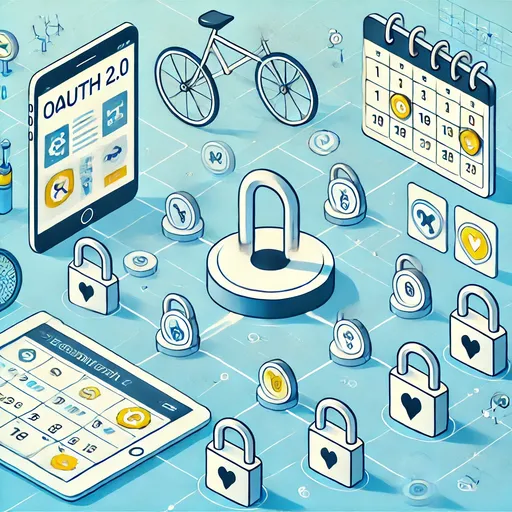OAuth 2.0: An Authentication Protocol Anyone Can Easily Understand
Have you ever heard the term "OAuth2"?
If you've logged in with your Google account or connected a service using your Facebook account, you've already used OAuth2. Today, let's take a step-by-step look at OAuth2, an essential element of modern web services, in a way that's easy to grasp.
What is OAuth2?
OAuth2 is a standard protocol for securely exchanging data between different applications.
For example, imagine you want a diet app to check your Google Calendar and automatically add your workout schedule. How unsettling would it be to share your Google account password with the app? That's exactly the problem OAuth2 solves.
The Purpose of OAuth2
-
Enhanced Security
It allows access to specific data without sharing passwords. -
Scoped Access
You can share only as much data as needed. (e.g., allowing read-only access to the calendar) -
User Control
Users can revoke access rights to applications at any time.
How OAuth2 Works
To understand OAuth2, it's helpful to look at a simple example.
Let’s consider the process of linking a diet app with Google Calendar:

1. User Approval Request
The diet app sends the user to Google with a request saying, "Please grant calendar access!"
2. User Authentication
The user logs into Google, reviews the request, and approves it.
3. Authorization Code Issuance
Google issues an "authorization code" to the diet app.
This code serves as a temporary key instead of a password.
4. Token Request
The diet app uses this authorization code to request an "access token" from Google.
5. Access Token Issuance
Google issues the token, which acts as the key to access the calendar.
6. Resource Server Request
The diet app uses the access token to read data from Google Calendar.
Why OAuth2 is Important
- Prevention of Password Exposure: No need to share passwords.
- Manageability: Users can easily manage application access.
- Standardization: It works the same way across various services.
Implementing an OAuth2 Server: How Do We Do It in Django?
Now that we understand the importance of OAuth2, what do we need to do to implement it ourselves?
Fortunately, there’s a great tool for Django developers: Django OAuth Toolkit (DOT).
Django OAuth Toolkit (DOT) is a library that makes it easy to implement an OAuth2 authentication server in a Django application.
Using this library, you can handle complex authentication logic simply.
What We'll Cover Next Time
In this article, we explored the basic concepts and operational principles of OAuth2.
Next time, I will show you how to implement an OAuth2 authentication server using the Django OAuth Toolkit.
Conclusion
OAuth2 is a powerful authentication protocol that offers both security and convenience.
If you want to utilize OAuth2 across various services, consider using tools like the Django OAuth Toolkit. We'll explore more specific details in the next article!
There are no comments.